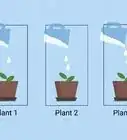This article was co-authored by Bess Ruff, MA. Bess Ruff is a Geography PhD student at Florida State University. She received her MA in Environmental Science and Management from the University of California, Santa Barbara in 2016. She has conducted survey work for marine spatial planning projects in the Caribbean and provided research support as a graduate fellow for the Sustainable Fisheries Group.
There are 7 references cited in this article, which can be found at the bottom of the page.
wikiHow marks an article as reader-approved once it receives enough positive feedback. This article received 11 testimonials and 86% of readers who voted found it helpful, earning it our reader-approved status.
This article has been viewed 255,625 times.
A Science Investigatory Project (SIP) uses the scientific method to study and test an idea about how something works. It involves researching a topic, formulating a working theory (or hypothesis) that can be tested, conducting the experiment, and recording and reporting the results. You will probably need to follow this procedure if you are planning to enter a project in a school science fair, for instance. However, knowing how to do an SIP is useful for anyone interested in the sciences as well as anyone who wants to improve their problem-solving skills.
Steps
Employing the Scientific Method
-
1Ask a question. Often, the most challenging part of an SIP is figuring out what you want to investigate. Take your time in choosing, because all of the subsequent steps will be based on the idea you select.
- Think about something that interests, surprises, or confuses you, and consider whether it is something you can reasonably investigate for a project. Formulate a single question that sums up you would like to examine.[1]
- For instance, say you've heard that you can make a simple solar oven out of a pizza box.[2] You may, however, be skeptical as to whether this can be done, or done consistently at least. Therefore, your question might be: "Can a simple solar oven be made that works consistently in various conditions?"
- Make sure the topic you select is manageable within your time frame, budget, and skill level, and that it doesn't break any rules for the assignment/fair/competition (for example, no animal testing). You can search for ideas online if you need help, but don't just copy a project you find there; this will also be against the rules and is unethical.
- However, you can modify an existing project to test a different hypothesis or look into a question that was not answered by previous experiments. This isn't an ethical breach, and can often make for interesting results and discussions.
-
2Research your topic. You can do this by reading reference and science books, searching online, or discussing it with knowledgeable people. Knowing your topic in more depth will help you construct your SIP.[3]
- Be aware of the requirements for your project. Many science fairs require that you have at least three reputable academic sources such as peer-reviewed journal publications to use as references.[4]
- Your sources will need to be unbiased (not tied to a product for sale, for instance), timely (not an encyclopedia from 1965), and credible (not some anonymous comment on a blog post). Web sources that are supported by a scientific organization or journal are a good bet. Ask your teacher or project director for guidance if you need it.
- For instance, the search query "how to make a solar oven out of a pizza box" will produce a bounty of sources, some more scientifically-grounded (and thus reliable) than others. The hit on an on-topic article in a recognized, reputable periodical should be considered a valid source.[5]
- On the other hand, blog posts, anonymous articles, and crowd-sourced materials probably won't make the cut. As valuable a resource as wikiHow is, it may not be considered a valid source for your SIP. It can, however, be helpful in introducing you to your chosen experiment and pointing you toward more academic sources. Choosing well-developed articles with numerous footnotes (that link to solid sources themselves) will improve the odds of acceptance, but discuss the issue with your instructor, fair organizer, etc.
Advertisement -
3Form a hypothesis. The hypothesis is your working theory or prediction, based on the question you've asked and your subsequent research. It needs to be accurate and clear, but it doesn't need to be proven correct in order for your SIP to be successful (failed experiments are just as important as successful ones in science).[6]
- It is often helpful to turn your question into a hypothesis by thinking in "if / then" terms. You may want to frame your hypothesis (at least initially) as "If [I do this], then [this will happen]."
- For our example, the hypothesis might be: "A solar oven made from a pizza box can consistently heat foods any time there is abundant sunshine."
-
4Design your experiment. After you have formulated your hypothesis, it is time to test whether it is valid or not. The experiment you design should focus exclusively on either confirming or refuting your hypothesis. Remember, it's not important if you're right, it's important how you conduct the process.[7]
- Consideration of variables is key in setting up your experiment. Scientific experiments have three types of variables: independent (those changed by you); dependent (those that change in response to the independent variable); and controlled (those that remain the same).[8]
- When planning your experiment, consider the materials that you will need. Make sure they are readily available and affordable, or even better, use materials that are already in your house.
- For our pizza box solar oven, the materials are easy to acquire and assemble. The oven, item cooked (s'mores, for instance), and full sunshine will be controlled variables. Other environmental conditions (time or day or time of year, for instance) could be the independent variable; and "done-ness" of the item the dependent variable.
-
5Conduct your experiment. Once your preparation and planning is complete, the time will finally arrive when you can test the validity of your hypothesis.[9]
- Closely follow the steps that you have planned to test your experiment. However, if your test can not be conducted as planned, reconfigure your steps or try different materials. (If you really want to win the science fair, this will be a big step for you!)
- It is common practice for science fairs that you will need to conduct your test at least three times to ensure a scientifically-valid result.[10]
- For our pizza box oven, then, let's say you decide to test your solar oven by placing it in direct sun on three similar, 90-degree Fahrenheit days in July, at three times each day (10 am, 2 pm, 6 pm).
-
6Record and analyze your results. Even the most interesting and enlightening test will be useless to your SIP if you do not accurately record and analyze the results.
- Sometimes your data may be best recorded as a graph, chart, or just a journal entry. However you record the data, make sure it is easy to review and analyze. Keep accurate records of all your results, even if they don't turn out the way you hoped or planned. This is also part of science![11]
- As per the solar oven tests at 10 am, 2 pm, and 6 pm on three sunny days, you will need to utilize your results. By recording the done-ness of your s'mores (by how melted the chocolate and marshmallow is, for instance), you may find that only the 2 pm placement was consistently successful.[12]
-
7Make your conclusion. Now that you have conducted your experiment and either confirmed or refuted your hypothesis, it is time to clearly and accurately state your findings. In essence, you are now answering the question you originally asked.[13]
- If you started out with a simple, clear, straightforward question, and a similar hypothesis, it should be easier to craft your conclusion.
- Remember, concluding that your hypothesis was completely wrong does not make your SIP a failure. If you make clear, scientifically-grounded findings, and present them well, it can and will be a success.
- In the pizza box solar oven example, our hypothesis was "A solar oven made from a pizza box can consistently heat foods any time there is abundant sunshine." Our conclusion, however, might be: "A solar oven made from a pizza box can only be consistently successful in heating foods in mid-day sun on a hot day."
Explaining and Presenting Your Project
-
1Know how your project will be evaluated. Whether it is a science class assignment, science fair project, or something else, it is important to be aware of the criteria that will be used to evaluate your SIP.
- For a science fair, for example, the judging could be based on the following criteria (adding up to 100%): research paper (50%); oral presentation (30%); display poster (20%).
-
2Create an abstract. More than likely, you will be required to write a brief summary of your SIP, known as an abstract. It needs to clearly state your idea, your hypothesis and how you tested it, and the conclusion you reached.
- SIP abstracts are often limited to one page in length, and perhaps 250 words. In this short space, focus on the purpose of your experiment, procedures, results, and any possible applications.[14]
-
3Write a research paper. If the abstract provides the basic information, the research paper provides the substantial details and analysis of your SIP. It is easy to think the experimenting itself or the poster you get to create is more important (perhaps because they are more fun to do), but the research paper is often the most important component in the evaluation of your project.
- Use the guidelines provide by your teacher or the science fair director for information on how to construct your research paper.
- As one example, your paper may need to be broken down into categories such as: 1) Title Page; 2) Introduction (where you identify your topic and hypothesis); 3) Materials & Methods (where you describe your experiment); 4) Results & Discoveries (where you identify your findings); 5) Conclusion & Recommendations (where you "answer" your hypothesis); 6) References (where you list your sources).
-
4Prepare your oral presentation. The time allotted and detail expected from the oral presentation of your SIP (if required at all) can vary widely. You may need to speak for 5 minutes or 20. Be clear on the requirements beforehand; for instance, whether PowerPoint presentations are expected.
- Write up your research paper first, and use it as your guide in constructing your oral presentation. Follow a similar framework in outlining your hypothesis, experiments, results, and conclusions.
- Focus on clarity and concision. Make sure everyone understands what you did, why you did it, and what you discovered in doing it.
-
5Make a visual aid. Most science fairs still require a poster presentation of your project. It will essentially be a visual display of your research paper.[15]
- Science fairs commonly use a standard size, three panel display board, approximately 36 inches high by 48 inches wide.
- You should lay out your poster like the front page of a newspaper, with your title at the top, hypothesis and conclusion front and center, and supporting materials (methods, sources, etc.) clearly placed under headings on either side.
- Use images, diagrams, and the like to spruce up the visual appeal of your poster, but don't sacrifice content for visual pizzazz.
Expert Q&A
Did you know you can get expert answers for this article?
Unlock expert answers by supporting wikiHow
-
QuestionHow can I shorten the scientific method?
 Bess Ruff, MABess Ruff is a Geography PhD student at Florida State University. She received her MA in Environmental Science and Management from the University of California, Santa Barbara in 2016. She has conducted survey work for marine spatial planning projects in the Caribbean and provided research support as a graduate fellow for the Sustainable Fisheries Group.
Bess Ruff, MABess Ruff is a Geography PhD student at Florida State University. She received her MA in Environmental Science and Management from the University of California, Santa Barbara in 2016. She has conducted survey work for marine spatial planning projects in the Caribbean and provided research support as a graduate fellow for the Sustainable Fisheries Group.
Environmental Scientist The scientific method is followed by scientists across the academic and professional spectrum. From high school students to lab scientists, each of the steps of the scientific method is important to the process of scientific inquiry. Each of the steps builds upon the previous step, so you don't want to shorten the process and miss a vital component.
The scientific method is followed by scientists across the academic and professional spectrum. From high school students to lab scientists, each of the steps of the scientific method is important to the process of scientific inquiry. Each of the steps builds upon the previous step, so you don't want to shorten the process and miss a vital component. -
QuestionHow can I create a problem?
 Bess Ruff, MABess Ruff is a Geography PhD student at Florida State University. She received her MA in Environmental Science and Management from the University of California, Santa Barbara in 2016. She has conducted survey work for marine spatial planning projects in the Caribbean and provided research support as a graduate fellow for the Sustainable Fisheries Group.
Bess Ruff, MABess Ruff is a Geography PhD student at Florida State University. She received her MA in Environmental Science and Management from the University of California, Santa Barbara in 2016. She has conducted survey work for marine spatial planning projects in the Caribbean and provided research support as a graduate fellow for the Sustainable Fisheries Group.
Environmental Scientist
-
QuestionHow can I decide on a topic between physics, biology, or chemistry for a project?
 Community AnswerThink which topic you'd be better at. If you think you'd do great on all three, it doesn't hurt to look at ideas online. Just don't copy any project! Use it as your inspiration to think of an even better project.
Community AnswerThink which topic you'd be better at. If you think you'd do great on all three, it doesn't hurt to look at ideas online. Just don't copy any project! Use it as your inspiration to think of an even better project.
References
- ↑ https://www.khanacademy.org/science/biology/intro-to-biology/science-of-biology/a/the-science-of-biology
- ↑ http://www.education.com/science-fair/article/design-solar-cooker/
- ↑ https://www.khanacademy.org/science/biology/intro-to-biology/science-of-biology/a/the-science-of-biology
- ↑ https://www.societyforscience.org/isef/international-rules/rules-for-all-projects/
- ↑ http://www.scientificamerican.com/article/sunny-science-build-a-pizza-box-solar-oven/
- ↑ http://www.sciencebuddies.org/science-fair-projects/project_guide_index.shtml
- ↑ http://spaceplace.nasa.gov/science-fair/en/
- ↑ http://www.sciencebuddies.org/science-fair-projects/project_guide_index.shtml
- ↑ http://spaceplace.nasa.gov/science-fair/en/
- ↑ http://www.sciencebuddies.org/science-fair-projects/project_guide_index.shtml
- ↑ http://spaceplace.nasa.gov/science-fair/en/
- ↑ http://www.education.com/science-fair/article/design-solar-cooker/
- ↑ http://spaceplace.nasa.gov/science-fair/en/
- ↑ https://ctsciencefair.org/student-guide/abstract
- ↑ http://www.sciencebuddies.org/science-fair-projects/project_guide_index.shtml
About This Article
To do a science investigatory project, start by thinking about a question you'd like to answer. For example, you may be wondering “Does the same kind of mold grow on different types of bread?” Then, once you have a question that's specific, form a hypothesis about what you think the answer will be. For this experiment, a good hypothesis might be “While all bread will produce the same kind of mold, the type of bread will impact how fast the mold grows.” With this hypothesis in mind, grab a few different kinds of of bread, set up your work station, and do your experiment at least 3 times to make sure the results are right. To learn how to record and analyze your results, keep reading!




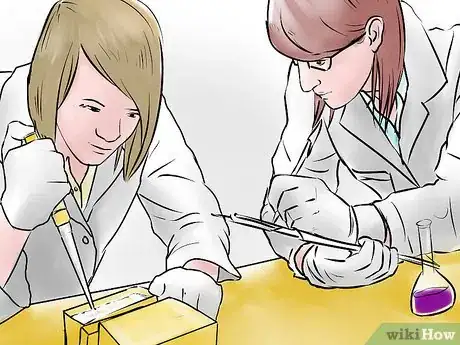

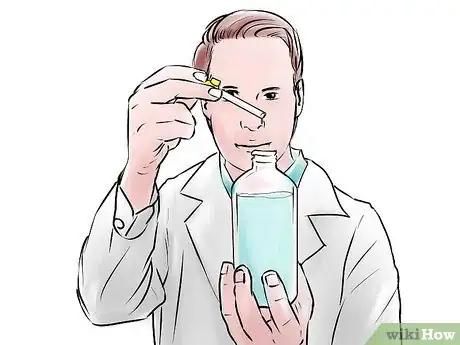








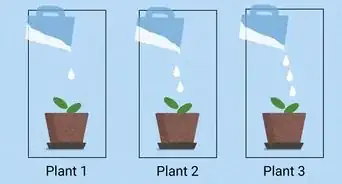
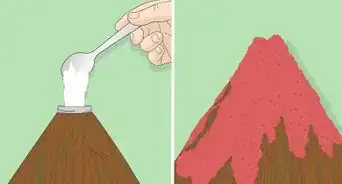





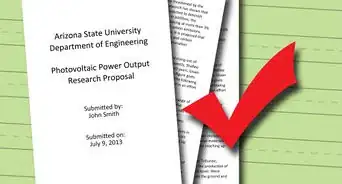

-Step-17.webp)















